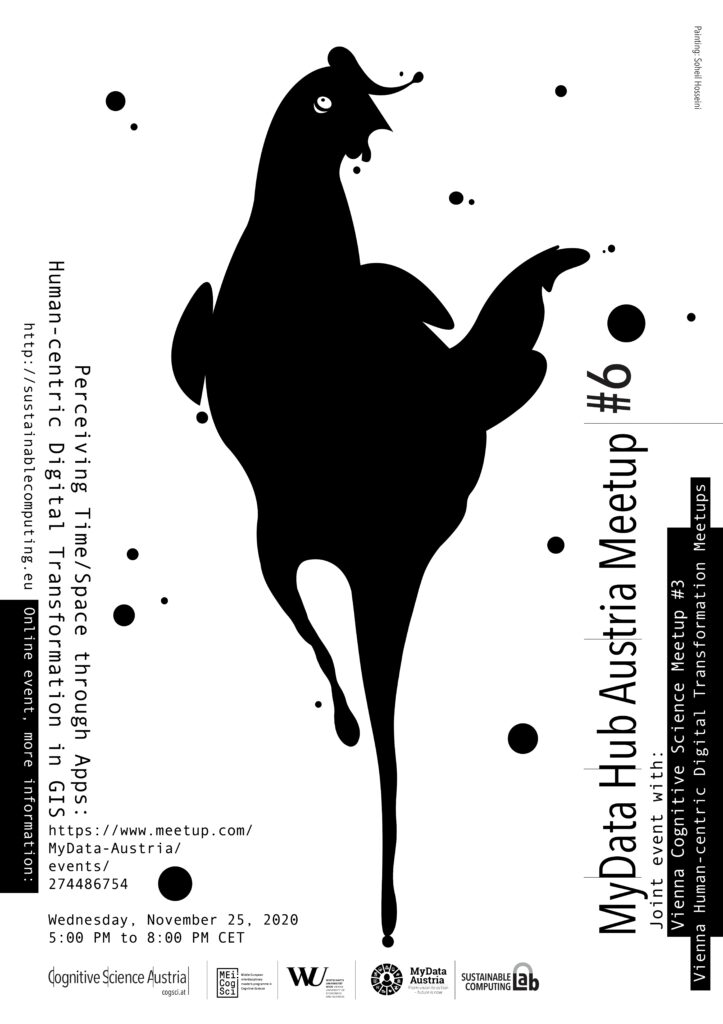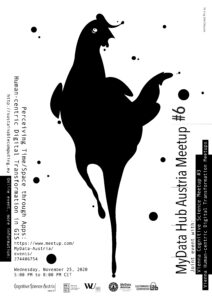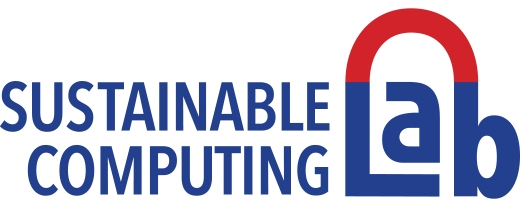

“The perfect map is just an illusion” – This statement visualises the problem occurring in conjunction with mapping anything. Therefore, a series of expert talks were held under the leading title “Perceiving Time/Space through Apps: Human-centric Digital Transformation in GIS (geographic information systems)”. This Sustainable Computing Lab and MyData Hub Austria Meetup #6 event tried to shed light on aspects of mobility, as well as useability and bias. The online meeting was attended by over 50 participants around the world.
The recently published article by Soheil Human, Till Winkler and Ben Wagner takes a closer look at one of the most frequently used maps and its recommendation systems – Google Maps. “Technology shapes our world and behaviour” according to Ben Wagner, who held the first talk. The authors argue that the technology of Google uses a “one-solution-fits-all-users-approach” while the representation needed is not only user- but also context-dependent. Nevertheless, Google Maps supports a design of its recommendation to users for routing decisions, that inherently shows biased Maps to its users, because of its different assumptions in the comparison field of options, instead of using visualisation options that give the user a better understanding of each recommendation or option. To give an example from the aforementioned paper, the traveling time presented to the user might not take into account that the user is not already seated in the car, but rather has to walk to the vehicle. Another assumption of Google Maps is the absence of a representation for time consumed by looking for a parking space at the end of the rout. Therefore, in Google’s perfect world you will find a parking space wherever you desire it – also in the city centre. This representation can be seen as a constant nudging of the user that makes them slowly more likely to prefer the travelling option car over the option of public transport. While projects related to mobility are very costly, Stefanie Peer further explained the cost-benefit-analysis aspects of such mobility related questions. Here, the benefits can be understood as travel-time-gains or improvements in terms of comfort.
These benefits have to be monetized in order to calculate the “willingness of people to pay for shorter travelling times”. Stefanie Peer also stresses that this ‘objective‘ travel time can only be seen as a measure and might therefore differ for every user according to their circumstances and travel-needs. Robert Braun tries to answer rather philosophical questions related to automobility such as, “What can be understood under the term Automobilty?” or “To what degree is it just a social construct? Are we talking about euclidean space or is it the semiotic space? is it the representation? Is this geographical reality or is it a produced reality after all?”.
These questions around data, reality and representation seem to be a key challenge of the today. Furthermore, this discourse is political and coloured though data sovereignty in Europe. While Europe has used digital infrastructure form America or China, the trend leads towards a direction that desires to establish a concept known as the European Public Sphere. This paradigm shift can also be related to the Society-of-Things according to Robert Braun, that describes not only an IoT (Internet of Things) understanding of the world, but further uses its principles of overall connectivity for the entire society.
On the other hand, Robert Braun brought up the debate about data-accessibility and data-ownership. Currently data often is stored in data silos that only grants few people access to it and cannot be used additionally e.g. for research purposes. This is why Robert Braun wants to actively contribute to creating a data economy with the user and data-creator in the center.
Martin Semberger form the Austrian Federal Ministry for Digital and Economic Affairs (BMDW) argues that the state is an important actor within the field of data in general and mobility data as a specific. Martin Semberger is an expert on European digital-single-market topics like the reuse of public information, open data and public sector information. Martin Semberger also stresses the importance of legally addressing the digital economy, where he describes the General Data Protection Regulation (GDPR) as a “global benchmark”.
The directive on open data and the re-use of public sector information Martin Semberger has worked on, wants to lead the way towards an open data to society.
The directive therefore creates “Ways and means on how we can compare [options] to make better use of data”
While we live in a marginal-cost-society in the digital world, Martin Semberger argues that
the general principle in Europe is that all publicly financed data should be openly available in order to boost the potential for creativity for innovation and for the economy.
The directive provides for provisions that account for e.g. standard licenses (here Creative Commons Licenses should be given an advantage), transparency conditions, requests, non-discrimination clauses etc. Through this a more democratic playing field should be settled within the European Single Market. Martin Semberger also mentions the European Data Governance Act, that takes the secure sharing of data into consideration.
The last presentation centered around sustainable automobility. Florian Daniel – the innovation manager of Carployee described their innovative carpooling App. Carployee can be used by companies for reducing the overall company CO2-footprint and brings together effective solutions for driver and the chauffeured user. Through gamification and HR-related incentives Carployee tries to make carpooling flexible and comfortable. In this use case data is used to schedule routes and nudge the user towards a more sustainable behavior in their mobility decisions. An example of nudging technology that promotes climate goals in comparison to Google Maps.

